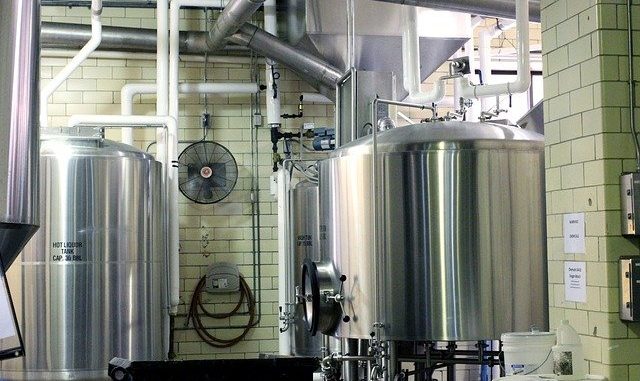
Draught beer lines are not glamorous in the world of brewing. They are however one of the most important pieces of kit for both home brewing beer and cider, right up to biggest breweries in the world. Every brewer wants to make sure the consumer gets the best quality beer and lager possible but neglect those beer lines and it becomes an impossibility. Looking after the beer lines means reduce exposure to cheesed-off customers and a reputation for ‘bad beer’ or ‘manure cider’.
For any brewer, beer lines connect all the individual items together, from fermenter, to tap and faucet, to filter, bright tank and so on. These lines can ruin a brewer’s hard work by rewarding poor diligence if they become dirty, are stained with fermenting bacteria because of poor cleaning. There is never any issue with bad beer in most cases if a brewer of any description scrupulously maintains the quality and cleanliness of their production lines.
The Problems With Draught Beer Lines
The principal issues are:
Mould/mold:
-fungal growth eking out an existence on left over remains in pipes and tubes. You can them growing as black or grey-black patches anywhere. Keg couplers, faucets, drains, pipes – you name any piece and if it isn’t cleaned then a black smudge of mold forms. Definitely not good for beer!
Bacteria:
-Worse than mould really because when they ferment in beer they produce unpleasant and awful flavours which are taints. These bacteria are not usually a health hazard but they are known to convert beer and lager aromas into diacetyl which is an off-putting butter note and also convert alcohol (ethanol) into acetic acid. These are two classic flavour notes of ‘bad beer’ and usually marking out poor hygiene.
Yeast:
-Whilst we love yeast we don’t need these tan-coloured microorganisms in the line because they will contaminate the kegs and the final beer. It’s not even clear if these are ‘good’ yeasts either. Yeast is purely for brewing the way we want it to and not in an uncontrolled way.
Beer Stone & Beer Mineral Deposits:
– calcium oxalate forms in any line because it is a byproduct of yeast metabolism. More prominent in beer rather than cider it none the less can form a slake or film of mineral in collection points, especially lines that eventually end up in the beer. It’s unsightly.
Cleaning Your Lines
- All lines need to be regularly cleaned. Some would argue after each run but once a fortnight will do irrespective of operation. Removal of bound protein is the reason so that substrate for supporting bacteria especially is removed. Good strong alkali detergent is needed. Sodium hydroxide solution (2%-5%) is ideal but it must be thoroughly washed away after use. To check the wash an rinsing water is clear of sodium hydroxide means either using a pH indicator paper which shows if the rinsing water is not alkaline or phenolphthalein indicator.
- Whilst product lines in some instances cane be soaked it’s best to have a system that recirculates alkali and rinsing solutions without pulling all the kit apart. On beverage lines, hot alkali is preferred but is not feasible for smaller-scale brewers. Most brewers leave the alkali solution in the line for at least 20 minutes to soak the internal surfaces.
- Acid is used to remove stone and other mineral deposits. A 1% hydrochloric acid is often used in these circumstances.
- Having cleaned the line, it is also a very good idea to sterilize the lines using detergents. It may seem a palaver but these not only clean but sanitize as well. Most are based on using active oxygen. They include peracetic acid and/or peroxycarbonates. Others use chlorine along with a slightly foaming dtergent or surfactant to maximise adhesion.
- Faucets and taps are cleaned every two weeks. They also need to be checked for leaks too.
- Some products using fruit and cider cab leave off-notes in plastic. Check for unusual aromas from piping and beer lines if they have been used for this purpose. Discard any that appear susceptible to avoid tainting the product.
- Always use plenty of cold clean water to remove caustic and acid solutions.
Health & Safety Equipment
Always use reliable personal protective equipment such as face and eye protection with gloves suited to caustic. When handling any caustic solutions, wear a face visor as well as safety spectacles, plastic apron and appropriate workwear.
Leave a Reply